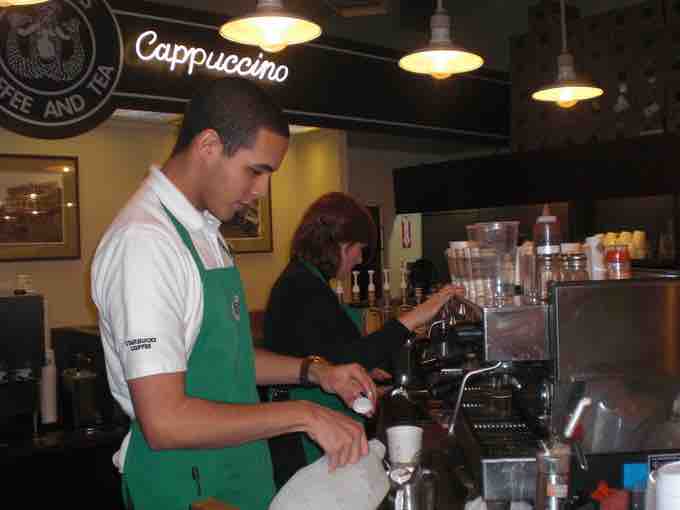Brand Equity
In marketing, brand equity refers to the value of a brand that is well-known and conjures positive mental and emotional associations. For any given product, service, or company, brand equity is considered a key asset because it helps it remain relevant and competitive. Brand equity can manifest itself in consumer recognition of logos or other visual elements, brand language associations made by consumers' perception of quality, and value among other relevant brand attributes.
When consumers trust a brand and find it relevant, they may select the offerings associated with that brand over those of competitors even at a premium price. For example, Starbucks can sell its coffee at a higher price than solid market competitors because consumers associate the brand with quality and value . This is why brand equity is oftentimes directly correlated with a brand's profitability.

A picture of baristas at work in the first Starbucks coffee shop, Seattle, WA.
Starbucks sells its coffee at a higher price point which is justified by its perceived brand value and quality.
Measuring Brand Equity
Brand equity is strategically crucial, but also very difficult to quantify. As a result, many experts have developed tools or metrics to analyze this asset, although there is no universally accepted way to measure it. For example, while it can be measured quantitatively using numerical values such as profit margins and market share, this approach fails to capture qualitative elements such as prestige and mental and emotional associations.
According to David Aaker, a marketing professor and brand consultant, there are ten attributes of a brand that can be used to assess its strength:
- Differentiation
- Satisfaction or loyalty
- Perceived quality
- Leadership or popularity
- Perceived value
- Brand personality
- Organizational associations
- Brand awareness
- Market share
- Market price and distribution coverage
Brand Asset Valuator
Young & Rubicam, a marketing communications agency, has developed the brand asset valuator, a tool to diagnose the power and value of a brand. The agency uses this tool to survey and measure consumers' perspectives along four dimensions:
- Differentiation: The defining characteristics of the brand and its distinctiveness relative to competitors
- Relevance: The appropriateness and connection of the brand to a given consumer
- Esteem: Consumers' respect for and attraction to the brand
- Knowledge: Consumers' awareness of the brand and understanding of what it represents
Other ways that brand equity can be measured (these can be used individually or in combination):
- At the firm level - Brand equity can be studied as a financial asset by making a calculation of a brand's worth as an intangible asset. For example, a company can estimate brand value on the basis of projected profits discounted to a present value. In turn, the present value can be used to calculate the risk profile, market leadership, stability, and global reach.
- At the product level - The price of an equivalent well-known brand can be compared to that of a no-name or private label product.
- At the consumer level - This measure seeks to map the mind of the consumer to uncover associations with the given brand. For example, projective techniques can be commonly used to identify tangible and intangible attributes, attitudes, and various perceptions about the brand. Under this approach, the brands with the highest levels of awareness and most favorable and unique associations are considered high equity brands.